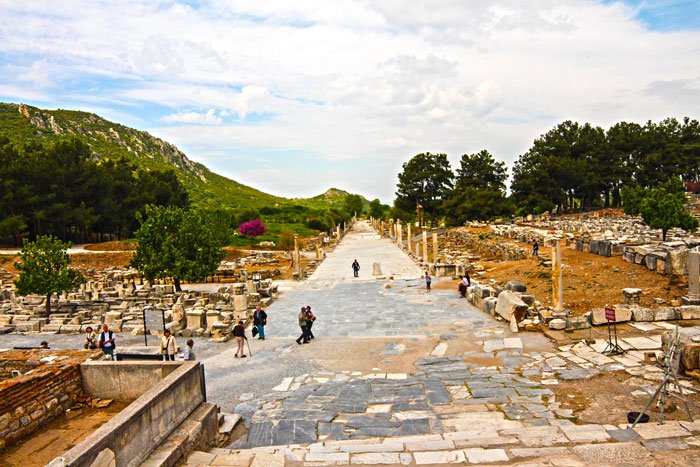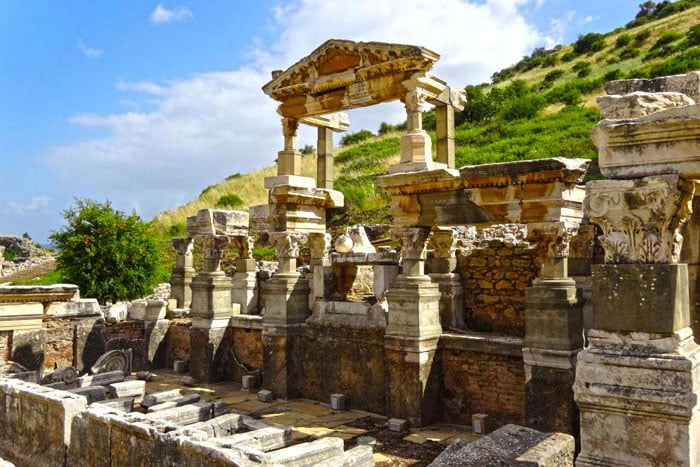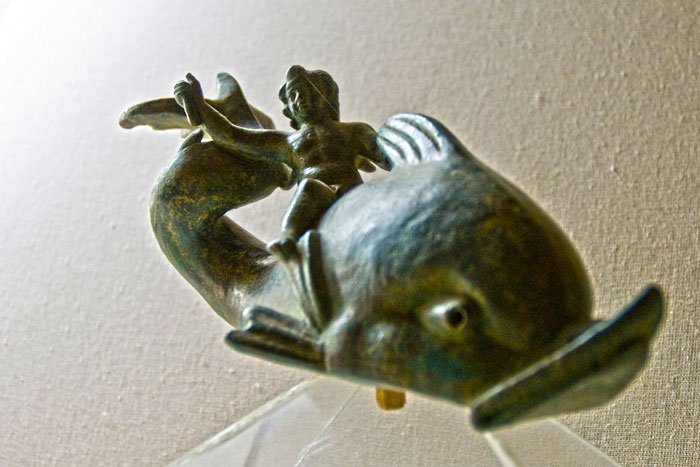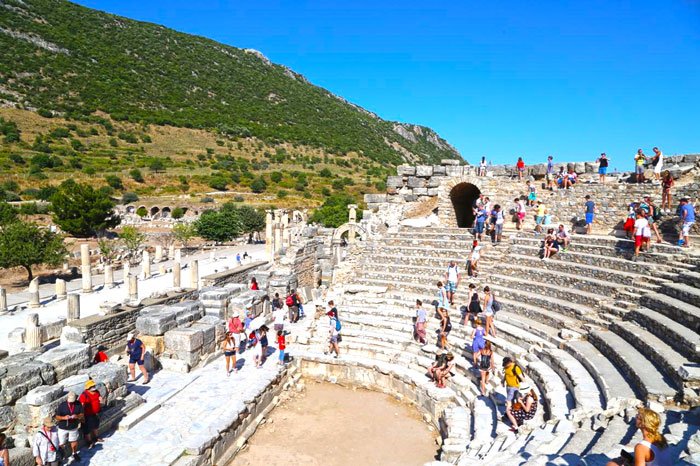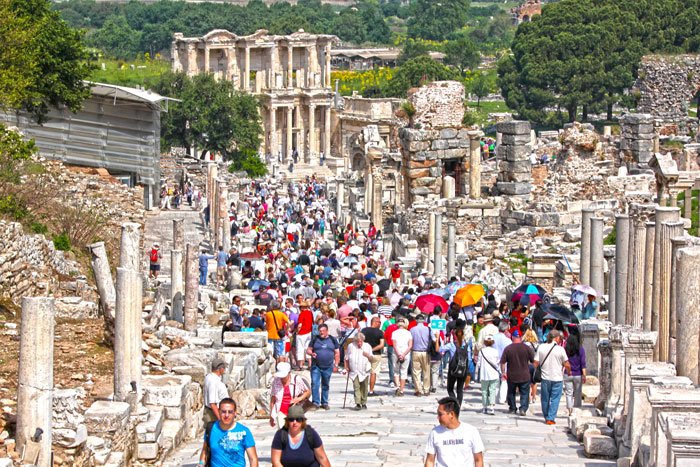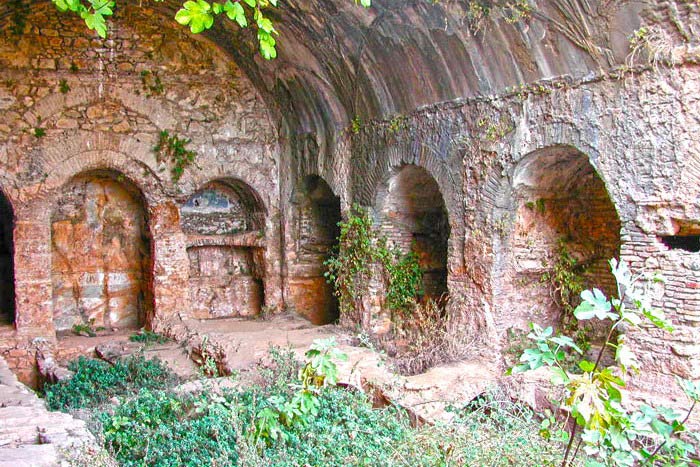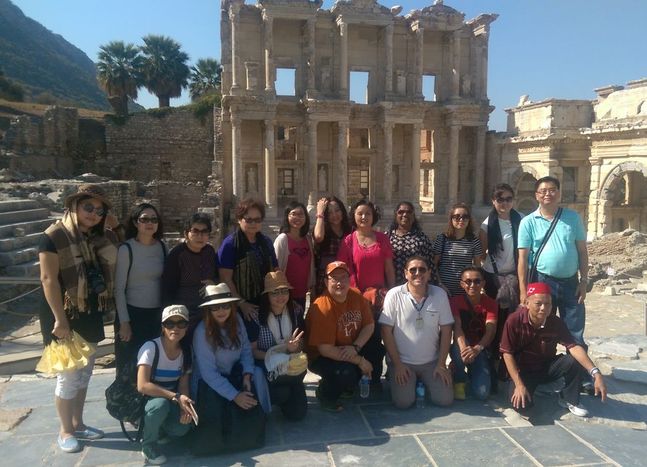Ephesus Daily Tours – Hadrian Temple
Ephesus Daily Tours – the remains of the Temple were unearthed in 1956 during excavations carried out by the Austrian Archaeological Institute. Due to its excellent state of preservation and historical importance it was rebuilt with original building elements in 1957/1958. There were also some supplementation with modern building material so as to reproduce the building’s precise appearance more fully. In 2012 the Austrian Archaeological Institute began an extensive conservation project with the support of the J. M. Kaplan Fund. The project was completed in September 2014. All the photos included in this post were taken in April 2015 after the conservation was finished.
According to an inscription engraved on the archivolt of the entablature, the small temple-like structure was dedicated to Artemis Ephesia, Emperor Hadrian and to the demos of Ephesus, by the asiarch Poplius Vedius Antoninus Sabinus of Ephesus.
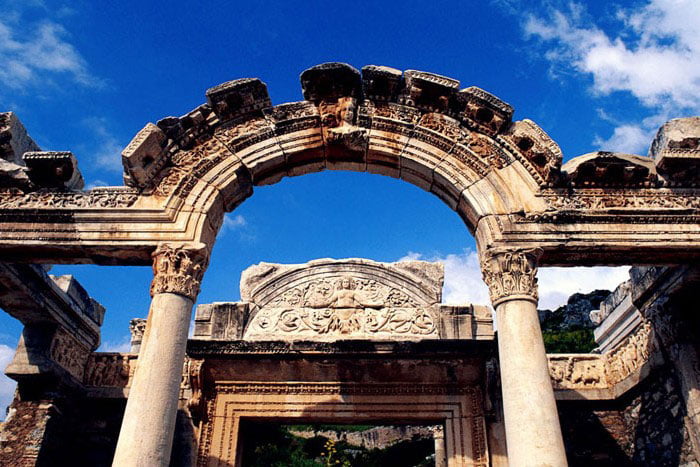
The building is a tetrastyle (4 columns) prostyle (only columns are along the front side) temple of modest dimensions and has rich architectural and sculptural decorations. Two Corinthian columns and two pillars on the edges support the entablature with a curved Syrian type pediment decorated with floral patterns and bearing a relief of Tyche; the goddess of victory. The Goddess is wearing a crown depicting the walls and towers of the city “Ephesus Daily Tours”.
Behind the arch is the pronaos, the inner area of the temple’s portico. It has a door opening crowned by a typanum; a semi-circular relief depicting a female figure (probably Medusa) among acanthus leaves and scrolls.
The door leads to the cella, the interior of the monument. The cella measured 7.50m in width and 5m in length and was roofed by a barrel vault.
Ephesus Daily Tours – Athenian prince Androclus
The pronaos is decorated with a frieze consisting of four marble slabs depicting the foundation of the city of Ephesus by the Athenian prince Androclus. The frieze is not Hadrianic as it was not sculptured at the same time as the Temple. It was probably added to the monument from an unknown building during a restoration in the 4th century AD. The frieze on the Temple is a copy, the original is on display in the Ephesus Museum.
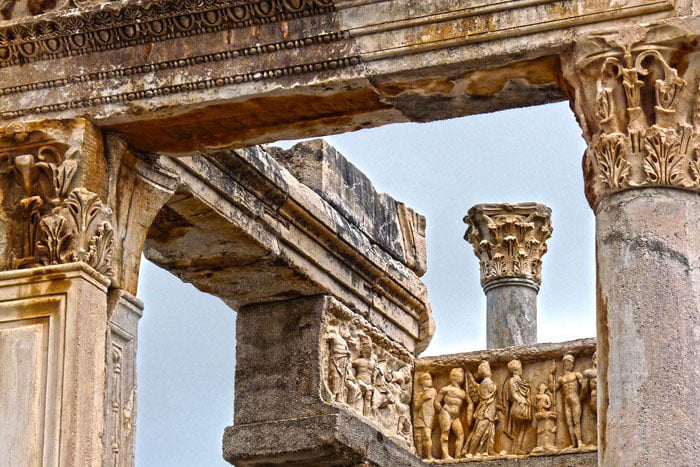
The first slab depicts five figures: from left to right; a male possibly representing Zeus, a Nymph representing the Hypelaios spring, a warrior and Androclus on horseback attacking a wild boar. Beneath the figure of the animal is a fallen warrior. The foundation myth of Ephesus states that Androclus, the son of Athenian king Codrus, consulted the oracle of Apollo in Delphi, who prophesied that fish and a wild boar would lead him to the site where he would found a new city.
After landing on the coast of Ionia near the later harbour of Ephesus, the Greek colonists – in search for a new location for his people to protect them from the Dorian invasion – cooked some fish. One of them leaped out of the brazier scattering coals and set fire to the nearby bushes, from which a boar ran out. Androclus slew the boar and established the city where the animal fell.
Ephesus Daily Tours – Heracles and Dionysus
The second frieze shows a Roman Emperor making a sacrifice in front of an altar decorated with garlands. The Emperor wears a military tunic and paludamentum (a military robe), and is crowned by a Nike. On the right of the altar is a male figure, possibly Theseus, and next to him Heracles while four Amazons are fleeing from him. The Amazons, according to myth, took refuge in the Temple of Artemis at Ephesus from both Heracles and Dionysus.
The third frieze depicts three female figures which have been identified as Amazons fleeing from Dionysus. Dionysus is represented embracing a Satyr in the centre of the relief with Pan holding a thyrsus on his right. Next to him a figure sits on an elephant and a dancing Maenad is holding a cymbal “Ephesus Daily Tours”.

The fourth frieze portrays various divinities: from left to right; Dea Roma, Selene (Moon), Helios (Sun), Apollo, Artemis, Heracles, Dionysus, Hermes, Aphrodite, Ares and Athena. In the middle of the frieze is Androclus and his dog.
During the imperial period, the image of the city founder could be seen throughout the city. Androclus was also represented in various statuary forms while the boar appeared on coins minted in Ephesus. A statue from the Fountain of Trajan shows him standing with his dog.


